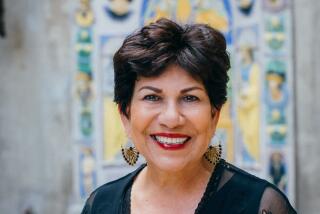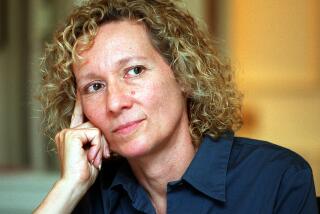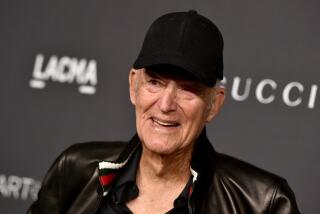Henry Fukuhara dies at 96; watercolorist led annual painting workshops at Manzanar
Henry Fukuhara, a California watercolorist and teacher who attracted many of the field’s most accomplished artists to annual painting workshops at the Manzanar relocation camp in Owens Valley, where he and thousands of other Japanese Americans were incarcerated during World War II, died of natural causes Jan. 31 at a nursing home in Yorba Linda, according to his grandson, Paul Niwa. He was 96.
A retired flower grower and wholesaler who did not begin painting in earnest until he was nearly 60, Fukuhara was known for energetic, abstract paintings, particularly of Manzanar and Santa Monica, where he grew up.
“Henry had such a unique style, so different from most plein-air artists,” said Bill Anderson, whose Sunset Beach gallery represented Fukuhara. “He had a huge following of people he influenced.”
Fukuhara started the Manzanar workshops in 1998, taking participants -- many of whom had been interned at Manzanar -- on painting excursions to various outdoor sites around the camp, including the Alabama Hills and the nearby town of Lone Pine.
The workshops, which have attracted about 80 participants a year, featured demonstrations by Fukuhara and other noted artists, including the late Milford Zornes, a leader of the California watercolor movement.
One of 10 children of Japanese immigrants, Fukuhara was born on April 25, 1913, in the Humboldt County town of Fruitland. He was encouraged to pursue his talent in art by a teacher at Santa Monica High School. After graduating in 1931, he enrolled at Otis Art Institute but was forced to drop out after a few months to help support his family through the Depression years.
Despite the hardships of the era, he kept up with his art and in 1936 had a show of linoleum block prints at what later became the Los Angeles County Museum of Art. A Times critic wrote that Fukuhara’s landscapes had “a classical feel, real character and poetry.”
In 1941, his family, which owned a retail nursery in Los Angeles, was just beginning to regain its financial footing when the Japanese attack on Pearl Harbor launched the United States into World War II. They managed to sell the nursery and store some personal belongings before arriving at Manzanar in April 1942.
By then a husband and father, Fukuhara worked in the camp’s drafting department, surveying plots for graves. “Seemed like a joke,” he told The Times in 1992, “but that’s what we did.” He lived in one room with his wife, daughter, parents, brother and sister-in-law.
In 1943, when internees who agreed to move away from the West Coast were permitted to leave the camp, Fukuhara and his family departed for Long Island, N.Y. With his father and brother he started a flower business that prospered over the next four decades.
In 1972, while recuperating from an operation, Fukuhara began painting. He studied with prominent watercolor artists and teachers on the East and West coasts, including Edgar Whitney, Robert E. Wood, Rex Brandt, George Post and Carl Molno. He began giving his own workshops before retiring from the flower business and moving back to Santa Monica in 1989.
Paintings of the Santa Monica Pier and other local scenes soon filled the house where he grew up. But in the mid-1990s, his thoughts returned to Manzanar. He organized the first workshop to raise funds for a committee dedicated to preserving the camp as a historic site. The 13th annual Fukuhara workshop will be held May 15 and 16 in his memory, said artist Al Setton, who helped Fukuhara with the last several events. For more information on the workshop, go to alsetton.com/work.
Setton was among the artist friends who helped Fukuhara continue to paint in recent years when his eyesight failed. Some of those paintings were shown in 2008 at the APC Fine Arts Gallery in Torrance. “He was a real inspiration to us in that way,” Setton said.
Fukuhara was not bitter about his Manzanar experience, shrugging it off, he said, “because it’s part of war” and “so many young men didn’t return.” When he painted scenes from the camp, he focused on symbols such as the guard tower, the entrance gate and the Sierras in the background, creating vibrant images.
His Manzanar paintings and workshops were an attempt at reconciliation, his grandson said, “a way to bring others to experience Manzanar . . . and help us find our own significance in the event.”
Fukuhara is survived by his wife, Fujiko; three daughters, Joyce Bowersox, Grace Niwa and Helen Fukuhara; a son, Rackham; four brothers, two sisters, four grandchildren and three great-grandchildren.
More to Read
Start your day right
Sign up for Essential California for the L.A. Times biggest news, features and recommendations in your inbox six days a week.
You may occasionally receive promotional content from the Los Angeles Times.







